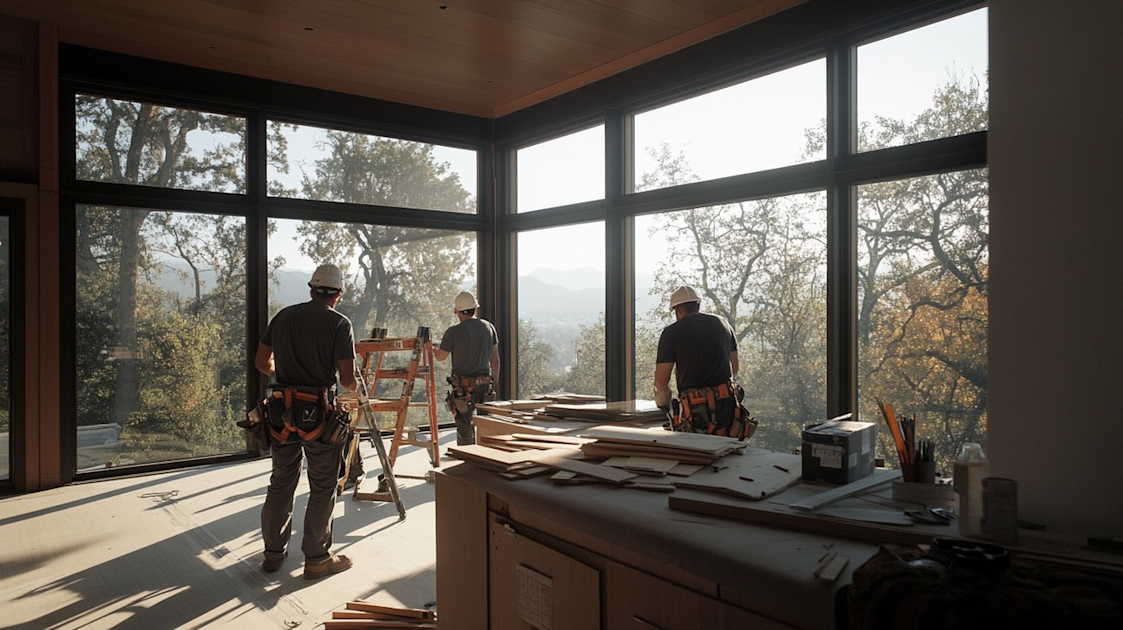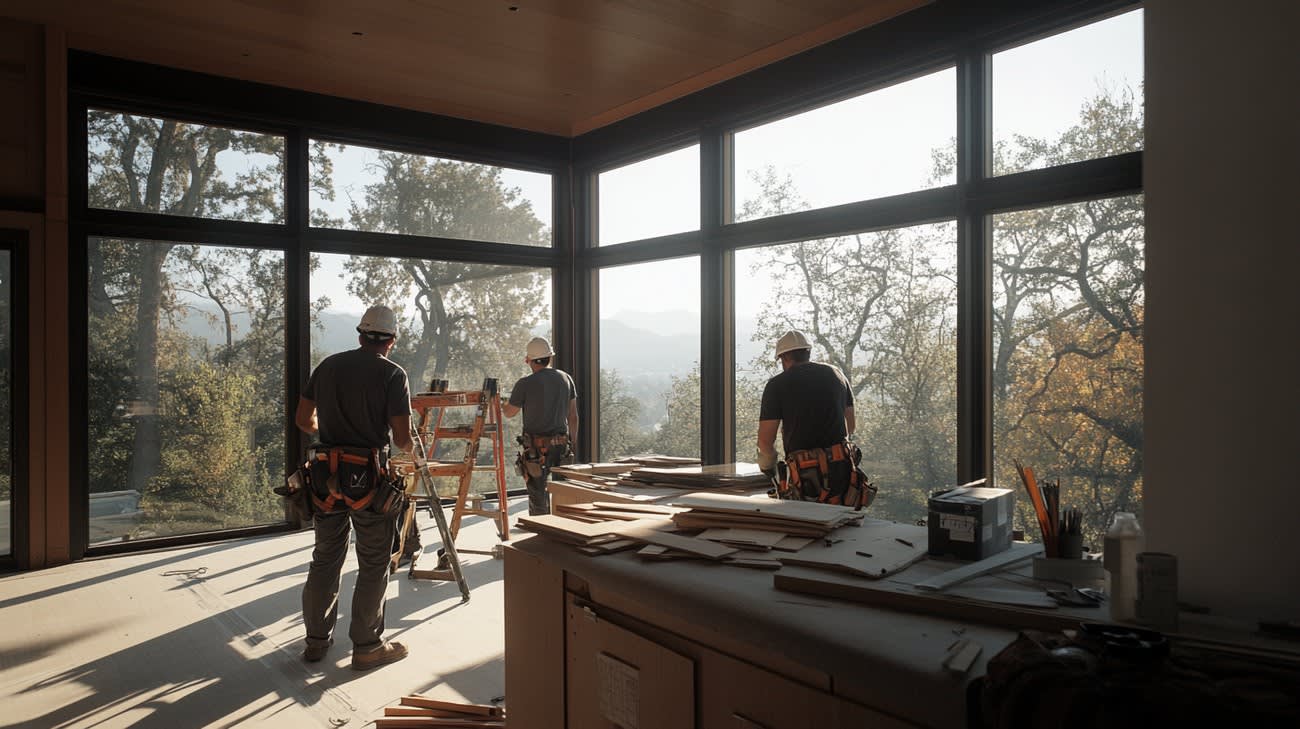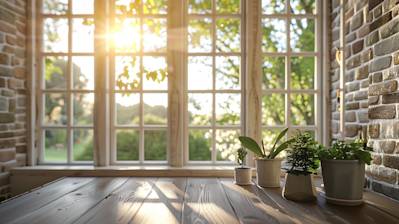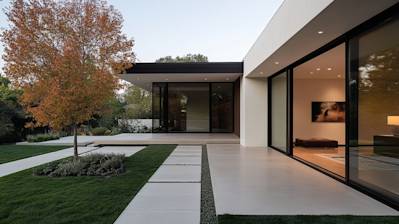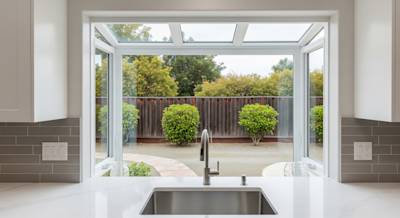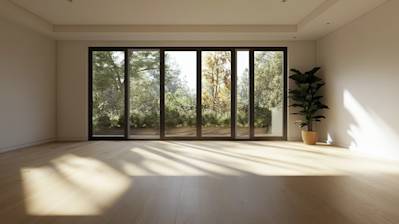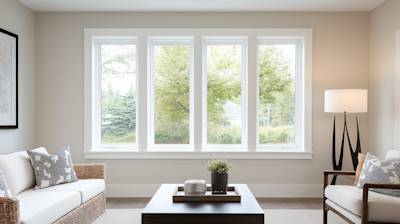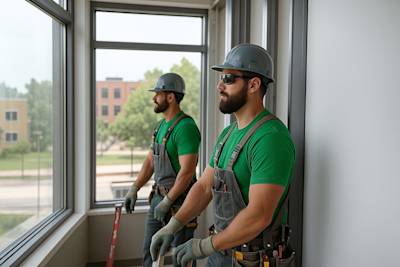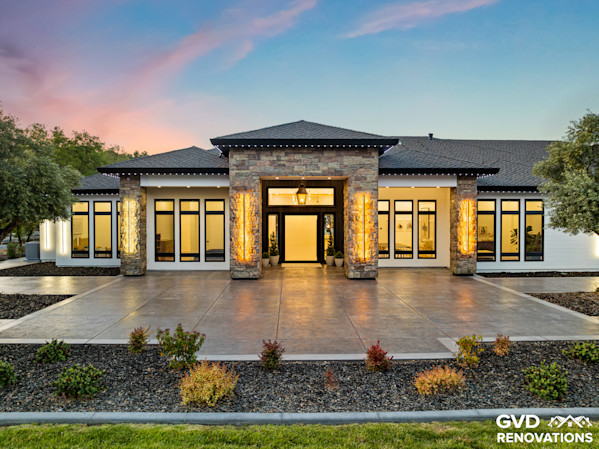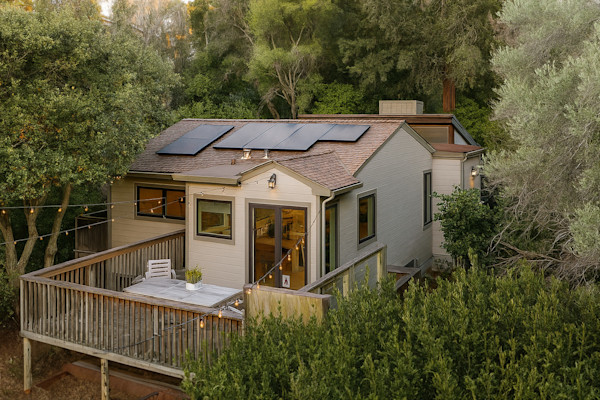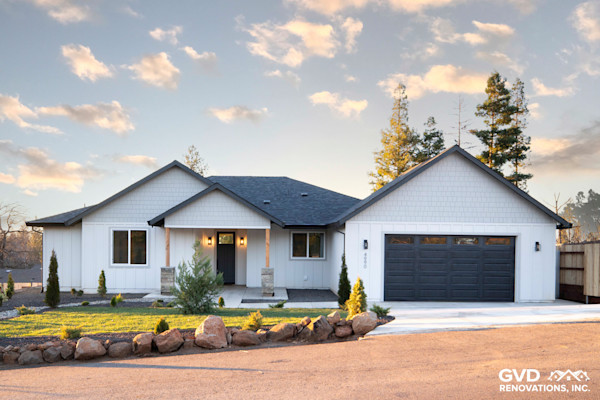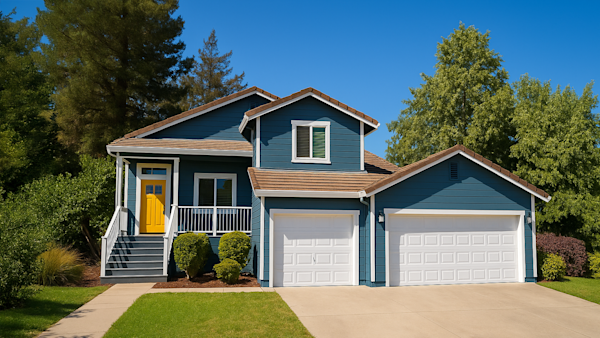Windows are an essential element of every home, serving multiple functions ranging from providing a source of natural light to enhancing the esthetic appeal of a building. Replacing these important aspects of your home isn't as complicated as it might seem, especially with this step-by-step guide to help you navigate seamlessly through the process.
Opt for the Ideal Window Type
There are myriad window types to choose from depending on the functionality and style you desire. From fixed windows, casement windows, and sliding windows to double-hung windows, bay windows, and awning windows, the possibilities are plentiful.
When considering how to replace windows, it's advisable to:
- Evaluate the energy efficiency of the new windows
- Assess the potential increase in home value
- Consider the cost of installation and the window type itself
Frame Assessment for Sacramento Window Replacement
Old frames aren't always salvageable, sometimes necessitating an entirely new window unit called a new construction window, equipped with a new frame.
On the contrary, if your existing frames are in good condition but the window itself is in bad shape, a replacement window would be appropriate. This involves maintaining the original frame while replacing just the window itself, which is more cost-effective and less labor-intensive.
Measuring For New Windows
Measuring accurately is absolutely crucial when determining how to replace windows. Incorrect measurements could result in a poor fit, which could lead to energy inefficiency and potential damage. Consider measuring in the following order:
- Measure the width from side jamb to side jamb
- Measure the height from the head jamb to the sill
- Measure the depth to ensure the window will fit without obstruction
Always remember to measure each window twice for maximum accuracy.
Getting the Right Tools for Window Replacement
Some essential tools you might need for window replacement include:
- A pry bar
- A level
- A utility knife
- A screwdriver set
- A drill
- A tape measure
- A hammer
- A caulk gun
Window Removal and Installation
When removing the old window, handle with care to avoid causing damage to the wall or window frame. Clear the area and remove the sash, being extra careful with glass.
Before installing the new window, clean and prepare the window opening, ensuring that it's dry, free from old caulk or paint, and is ready for installation. Check the level and shims and adjust as necessary, ensuring the window operates smoothly before nailing it into the frame.
Windows Installation Finishing
After installing the window, insulate around it to ensure maximum energy efficiency. Use expanding foam to seal the window gap. However, ensure not to overfill it to avoid pushing the window frame and affecting window operation.
Then, replace the trim and put the finishing touches like painting or staining as necessary.
Remember to clean your new windows for a sparkling finish and unobstructed view.

Frequently Asked Questions about How To Replace Windows
What Are the Steps to Replace a Window?
Replacing a window involves several steps:
- Measure the existing window to determine the correct size for the replacement.
- Remove the old window carefully, so as not to damage the surrounding structure.
- Prep the opening by cleaning it thoroughly and ensuring it's level.
- Install the new window, making sure it fits snugly and securely.
- Test the window to ensure smooth operation.
- Seal around the window with caulking and paint if necessary.
What Tools Do I Need to Replace a Window?
When replacing a window, you will need:
- a utility knife
- a pry bar
- screwdrivers
- a level
- a tape measure
- a hammer
- nails or screws
- caulking and a caulking gun
Is it Better to Repair or Replace Windows?
Whether to repair or replace a window depends on the extent of the damage. If it's a minor issue such as a broken pane, a repair might suffice. However, for extensive damage or if your windows are old and inefficient, window replacement would be a better option.
How Much Does it Cost to Replace a Window?
The cost to replace a window varies based on factors such as the size of the window, the type and quality of the replacement, and the region where you live. However, a general range for window replacement, including installation, could be $300 to $700 per window.
Can I Replace a Window Myself?
Yes, you can replace a window yourself if you have the skills and tools. However, it's important to know that it can be a complex job for the uninited. If not done correctly, it could lead to problems such as leaks, drafts, or even structural damage.
What Type of Replacement Window Should I Choose?
The type of replacement window you choose depends on your budget, aesthetic preferences, and your home's architecture. Some popular types include double-hung windows, casement windows, sliding windows, and bay or bow windows. It would be best to explore the pros and cons of each before making a decision.
How Long Does It Take to Replace a Window?
Replacing a window can take between 2 to 4 hours per window. This time may vary depending on the size, type, and location of the window, as well as any unanticipated challenges that arise during the process.
Will Window Replacement Save on Energy Costs?
Yes, window replacement can save on energy costs. Modern windows are more energy-efficient and provide better insulation than older models. This reduces heat loss in winter and keeps your home cooler in summer, leading to savings on your heating and cooling bills.

Pros of Replacing Windows
Energy Efficiency
Reduced Energy Costs
One excellent benefit of replacing windows in your home is the potential reduction in your energy costs. Newer models of windows are designed with improved insulation properties, which can contribute to maintaining comfortable indoor temperatures. That means, your heating and cooling systems won't have to work as hard, ultimately saving you significant amounts on your utility bills.
Better Comfort & Reduced Condensation
In addition to helping reduce energy costs, energy-efficient windows ensure more comfortable living conditions. They can decrease the amount of cold air entering your home in the winter, and reduce heat entry in the summer. Moreover, these windows are effective in reducing frost and condensation.
Improved Home Appearance
Aesthetics
That old, dilapidated window not only decreases the value of your property, but it also takes away from the overall aesthetic appeal of your home. Replacing your windows can greatly improve the look of your house both from the outside and inside.
Customization
When it comes to customization, new windows offer almost limitless possibilities. Depending on your preferences, you can choose from a large variety of styles, colors, and materials that can match your home’s design and your personal taste.
Increased Property Value
Better Resale Value
If you plan on selling your home in the future, investing in new windows can potentially increase your property's value. Buyers usually prefer homes with modern, energy-efficient windows as they'll not have to bear the costs of replacing them.
Enhanced Safety and Security
New windows often offer more advanced security features, providing an added layer of protection for your home. They can be tougher to force open from the outside, lowering the risks associated with break-ins.
Cons of Replacing Windows
High Upfront Cost
While new windows offer numerous benefits, the main disadvantage is the upfront cost. Depending on the size of your home and the type of windows you choose, a full window replacement project can be quite expensive.
Can Be Messy and Disruptive
Replacing windows involves significant work. You'll need to clear areas around the windows, inside and out, and it can cause disruptions to your daily routine. Depending on the scope of the project, you may also have to deal with dust and debris.
Requires Professional Installation
The process of replacing windows is not a simple DIY job. For the windows to function properly and provide all the benefits mentioned earlier, professional installation is required. Not only do you need to find trustworthy window installers but you also need to accommodate their schedules which can extend the process.
Not Always Necessary
Sometimes, window problems can be solved with cheaper and less disruptive methods like repairs. In some cases, what may seem like a need for window replacement is actually a minor issue, such as a broken seal or damaged weather stripping.
Potential Inconsistency with Home's Original Architectural Style
This is more of a concern for older homes. While new windows can indeed boost your home's overall appeal, they may not fit the original architectural styles. This can lead to a somewhat incongruous look, particularly for historical homes. It's therefore crucial to choose new windows that align with the character of the home.
Time-Consuming
The process of selecting the right style, finding a reputable contractor, and waiting for the delivery and installation of the new windows can be time-consuming. If you're not in a rush, this might not be a problem, but for those who value their time or need immediate solutions, this could be a con.
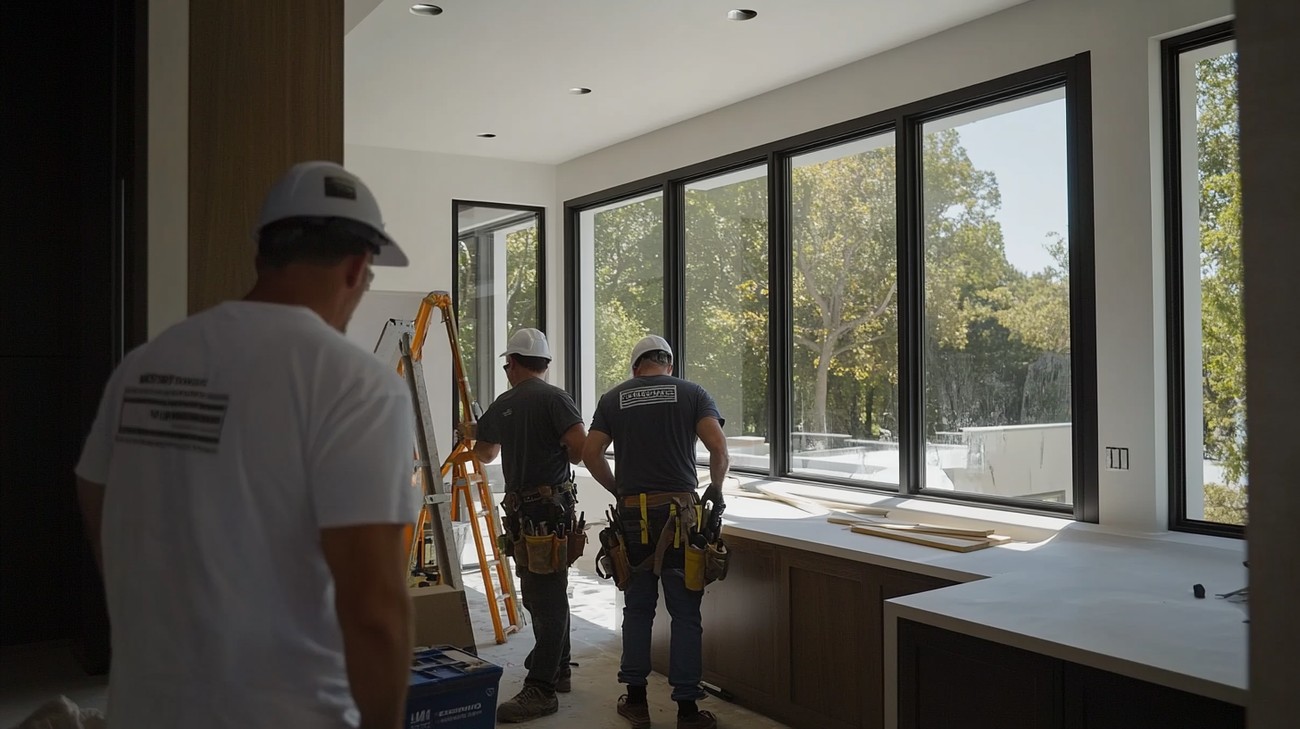
Myths and Misconceptions about Replacing Windows
Myth 1: All Replacement Windows are the Same
Misconception
It's a widely held belief among consumers that all replacement windows are the same apart from dimensions and color. People assume manufacturing processes, quality of material, and design are the same across various brands.
Reality
The truth is that quality, design, energy efficiency, and durability vary greatly among manufacturers. Not all windows are created with equal precision, care, and innovation. For instance, some windows may be more energy-efficient due to double or triple glazing, while others may provide better noise reduction. Some windows might also be manufactured using higher quality and more durable materials, making them last longer.
Myth 2: Replacing Windows is a DIY Project
Misconception
Most homeowners believe that replacing windows can be a do-it-yourself project. The misconception is based on the fact that detailed how-to videos and guides are available online, which make it seem like a manageable task.
Reality
While it is possible for people to replace their own windows, it requires a specific set of skills and knowledge. Replacing a window is more complex than it seems, and mistakes can lead to damage, poor insulation, and potentially, high energy bills. As such, it can be more cost-effective and efficient to hire professionals.
Myth 3: New Windows Don't Require Maintenance
Misconception
Many homeowners believe that once the windows are replaced, they wouldn't require any maintenance, at least for a while. They feel that new windows mean no repairs, cleaning, or other such tasks.
Reality
Even new windows require a certain level of upkeep. This includes cleaning, checking the seals, ensuring that the moving parts are well-lubricated, checking for any signs of wear and tear, and more. Regular maintenance can enhance the longevity of the windows and improve their overall performance.
Myth 4: Replacing One Window at a Time Saves Money
Misconception
It's commonly thought that replacing one window at a time – rather than all windows at once – is a cost-effective strategy. The rationale seems reasonable: spreading out the costs over time helps alleviate budgeting concerns.
Reality
While replacing one window at a time might seem less costly upfront, it could result in higher total spending over time. That’s because bulk orders and installation often come at a discount. Moreover, energy savings from fully replacing all old windows at once can be significant.
Myth 5: All Energy-Efficient Windows are the Same
Misconception
People often believe all energy-efficient windows are the same. It's assumed that as long as a window is labeled energy-efficient, it will provide similar benefits as any other energy-efficient window.
Reality
Energy-efficiency in windows depends on several factors, such as the window’s specific design, materials used and the quality of the installation. There’s also the different rating systems like U-factor, Solar heat gain coefficient (SHGC), and Energy Star ratings to consider. Even if two windows are both labeled as energy-efficient, the degree to which they affect energy consumption and thus utility bills can vary significantly.
Myth 6: Replacing Windows in Winter is a Bad Idea
Misconception
Many homeowners believe that windows should not be replaced in the winter because of low temperatures, believing it exposes the house to the cold, making the indoors uncomfortable.
Reality
Window replacement can be done any time of the year. Professionals have specific strategies to handle installations during colder months, typically replacing one window at a time to limit exposure to the cold. In contrast to popular belief, winter may actually be a convenient time for a window replacement as professionals typically have lighter schedules during this period.
Understanding these myths and misconceptions about replacing windows can help homeowners make more informed decisions, leading to maximum benefits from their new windows.
Summary
Knowing how to replace windows in your home can be a crucial skill, especially when you want to spruce up your living space or increase energy efficiency. With the right tools, measurements, and a bit of patience, you can master this DIY project over time. Keep in mind to be careful with window handling, and ensure you have a helping hand if you're dealing with a larger window.
Perhaps you've learned that how to replace windows isn't as intimidating as it first appears. It's a great mix of skill and logic that can bring you significant savings and upgrade your home's look and feel. Remember to always measure twice, invest in quality materials, and never rush the process. Over time, you'll likely improve and become more comfortable handling replacement projects yourself.
It's safe to say that replacing windows doesn't always require a professional's touch. With accurate measurements, the right tools, and mindful safety precautions, anyone can learn how to replace windows. After mastering this skill, not only will you boost your home's curb appeal, but you will also likely enjoy lower energy costs. It's a practical, rewarding home improvement skill worth mastering.
About GVD Renovations & Remodeling
GVD Renovations & Remodeling is a Roseville, CA-based company well-versed in transforming homes into spaces of comfort, beauty, and function. As local experts, we carry years of experience in providing top-tier renovation services that meet your unique taste and lifestyle needs. Our team is passionate about infusing life into homes through high-quality craftsmanship and attention to detail. Whether it's transforming your kitchen into a culinary sanctuary, turning your bathroom into a tranquil spa, or giving a whole new vibe to your exteriors, we're committed to delivering results that make you fall in love with your home all over again. Trust us at GVD Renovations & Remodeling for reliable, efficient, and stunning renovation solutions in the Roseville area.
This article is for general information only and not professional advice. Always consult a licensed contractor before making project decisions. Product details, specifications, or warranties may have changed since publication. Brand and product mentions reflect opinion, not endorsements or guarantees.
Tags: windows, home improvement, diy,


